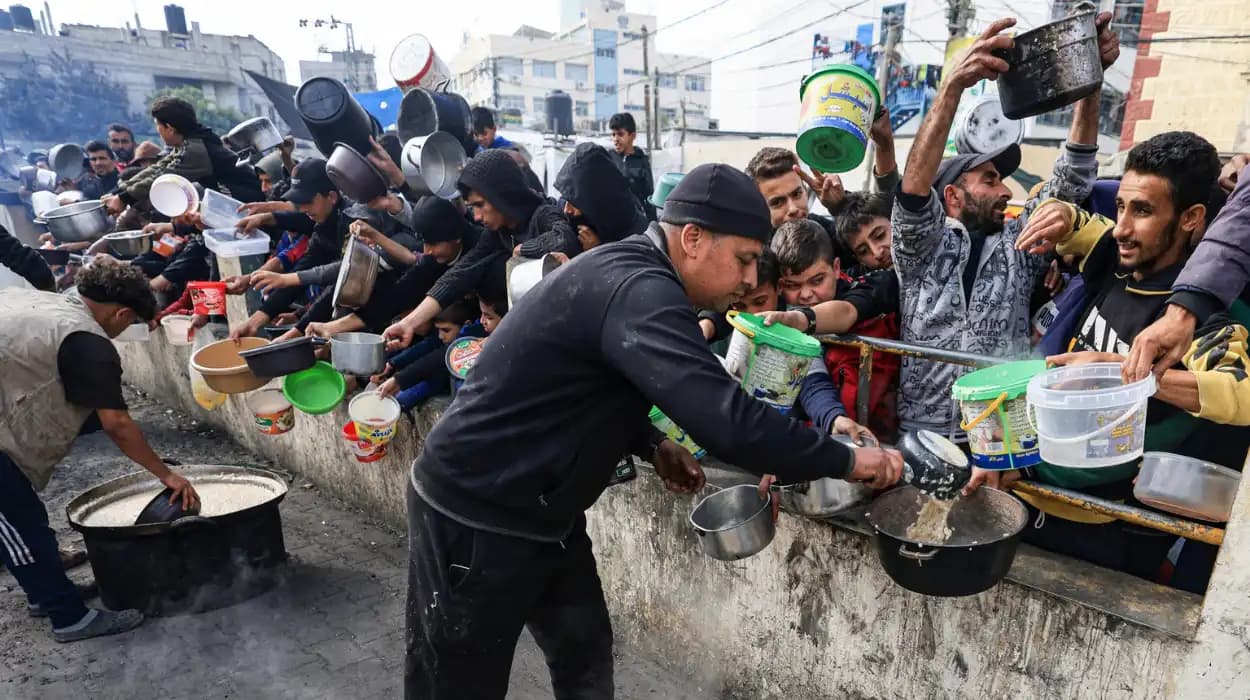The Gaza Strip faces one of the most severe humanitarian
crises globally, with millions of Palestinians suffering from dire shortages of
food, water, medical supplies, and basic services. Sending aid to Gaza is a
critical response to human suffering, designed to save lives, prevent famine,
and support the wellbeing of civilians caught in conflict.
The Humanitarian Crisis in Gaza: A Dire Situation
Gaza, home to over two million Palestinians, has endured
years of blockade, recurrent conflict, and economic hardship that have
devastated infrastructure and civilian life. According to the United Nations, a
significant portion of Gaza’s population depends entirely on humanitarian aid
to meet their basic needs. The blockade imposed by Israel, coupled with limitations
on border crossings, has led to widespread shortages of food, clean water,
fuel, and medicine, propelling large parts of the enclave toward famine
conditions.
Medical facilities are struggling due to chronic shortages
of supplies and fuel to operate equipment, while malnutrition, disease
outbreaks, and displacement cause suffering on an unprecedented scale. The
World Food Programme (WFP) and UNICEF consistently warn that without urgent aid
deliveries, the health and survival of vulnerable populations including
children and the elderly are at extreme risk. This ongoing crisis compels the
international community to act decisively by sending humanitarian aid to
alleviate suffering and preserve life.
Why Aid Delivery to Gaza Is Critical
Humanitarian aid serves as a lifeline to millions in Gaza,
helping address immediate survival needs and preventing widespread famine and
disease. Food distributions, water and sanitation programs, medical supplies,
and fuel for electricity generation ensure that civilians can survive amid
conflict and limited resources. The International Rescue Committee and other
agencies emphasize that even small amounts of aid can significantly impact
malnourished children’s health and help sustain families through prolonged
hardship.
Aid also supports essential services by enabling hospitals
to provide emergency care, water networks to function, and displaced families
to receive shelter and protection. The United Nations Relief and Works Agency
for Palestine Refugees (UNRWA) estimates it has enough stored food to feed
Gaza’s population for months but depends on secure and consistent access across
neighboring borders. The scale of aid needed extends beyond life-saving
rations; it encompasses rebuilding infrastructure and promoting resilience for
Gaza’s long-term recovery.
Challenges to Aid Access and Delivery
Despite urgent needs, delivering aid to Gaza faces
formidable obstacles. The Israeli blockade tightly controls border crossings
and restricts the volume and type of goods entering Gaza, citing security
concerns about Hamas’s potential appropriation of aid resources. Egypt also
limits its own border crossing at Rafah, a vital gateway for aid trucks and
civilians. These restrictions have resulted in significant delays and
bottlenecks, with thousands of truckloads of food and medicine often stuck in
neighboring countries or waiting at border crossings.
Internal distribution is complicated by security risks and
damage to infrastructure, limiting humanitarian organizations’ ability to reach
all areas equitably. Previous aid delivery models, such as the Gaza
Humanitarian Foundation system, faced harsh criticism for militarizing aid
distribution and exposing Palestinian civilians to dangers while seeking food
support. Humanitarian groups call for unrestricted, unhindered access to enable
safe and impartial delivery in line with international humanitarian principles.
Recent Ceasefire and Scaling Up Aid Efforts
Following a recent ceasefire between Israel and Hamas, aid
agencies are preparing for a significant scale-up of deliveries to Gaza. The
ceasefire agreement includes provisions for opening border crossings and
increasing the volume of aid admitted into the territory. UN agencies
anticipate sending hundreds of truckloads of food, medicine, and essential
supplies daily, aiming to confront imminent famine and health crises.
UNICEF, UNRWA, and the World Food Programme emphasize the
urgent need to maintain momentum to ensure aid reaches those in need quickly
without delays or political interference. Tens of thousands of displaced
Palestinians are returning to Gaza cities and neighborhoods devastated by
conflict, heightening the demand for aid to support their basic needs and
recovery efforts. Renewed access through crossings such as Rafah will be critical
in sustaining aid flows and meeting escalating humanitarian demands.
International Organizations and Aid Coordination
Multiple international bodies and non-governmental
organizations coordinate aid efforts in Gaza, working to maximize efficiency
and accountability. The United Nations, through bodies like UNRWA and OCHA,
alongside global partners such as the Red Cross, Oxfam, and the International
Rescue Committee, mobilizes resources and expertise to respond effectively to
urgent needs.
These agencies conduct needs assessments, manage logistics,
and strive to uphold humanitarian principles in contexts complicated by
conflict. Their work includes food distribution, health services, water and
sanitation provision, and protection for vulnerable groups. Donor countries,
humanitarian donors, and private entities contribute funding critical to
sustaining prolonged aid operations in Gaza.
The Moral and Legal Imperative of Sending Aid
International humanitarian law mandates that civilians
affected by conflict must receive protection and assistance. The right to life,
health, and dignity obliges the global community to intervene when civilian
populations face starvation, disease, and displacement triggered by war.
Sending aid to Gaza is not merely a political act but a humanitarian
imperative rooted in shared human values and legal commitments. Humanitarian
assistance helps address the immediate consequences of conflict and builds
trust among communities toward longer-term peaceful resolutions. It provides a
tangible expression of global solidarity with civilians caught in protracted
crises.
The question of why aid is sent to Gaza is answered by the
thousands of lives dependent on timely food, medicine, and essential services
amid one of the most severe humanitarian crises in recent history. Despite
significant obstacles to aid delivery posed by blockades, security concerns,
and infrastructure damage, the international community remains committed to
providing relief and sustaining Gaza’s civilian population.
Recent ceasefires offer hope for scaling up aid and alleviating suffering, making the continued support from international organizations and donors critical. Ultimately, sending aid to Gaza embodies the universal commitment to uphold human dignity and respond decisively to humanitarian needs regardless of political complexities.
